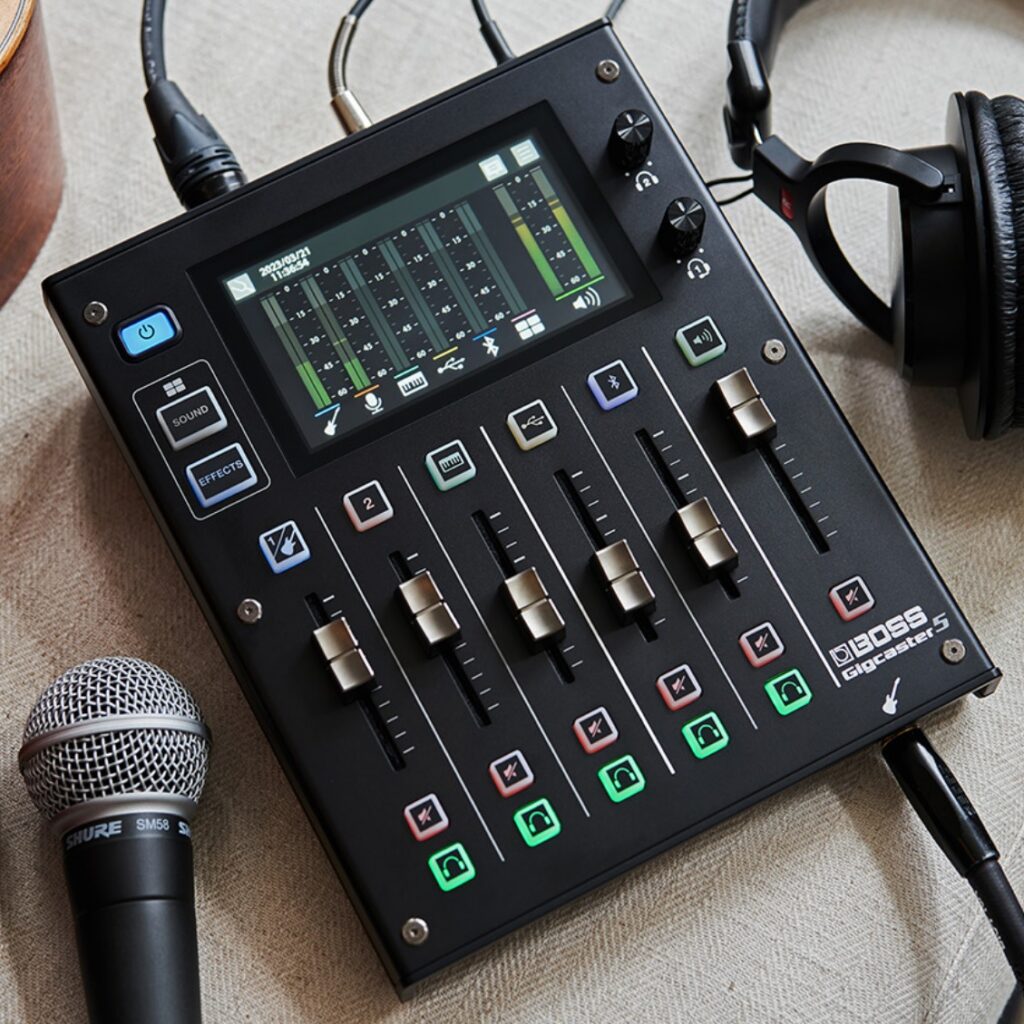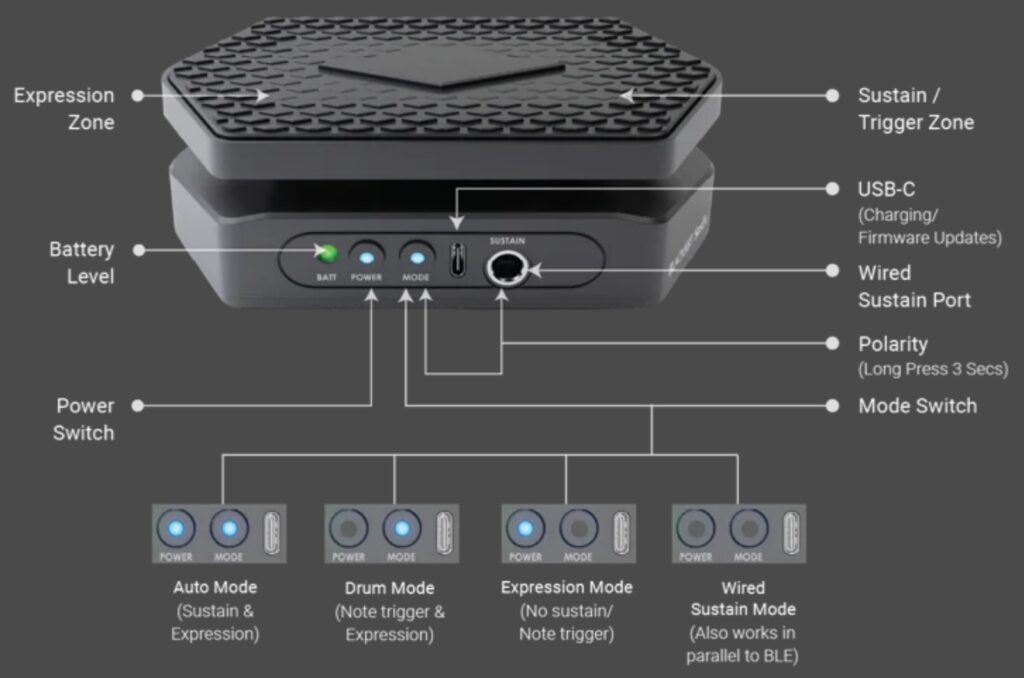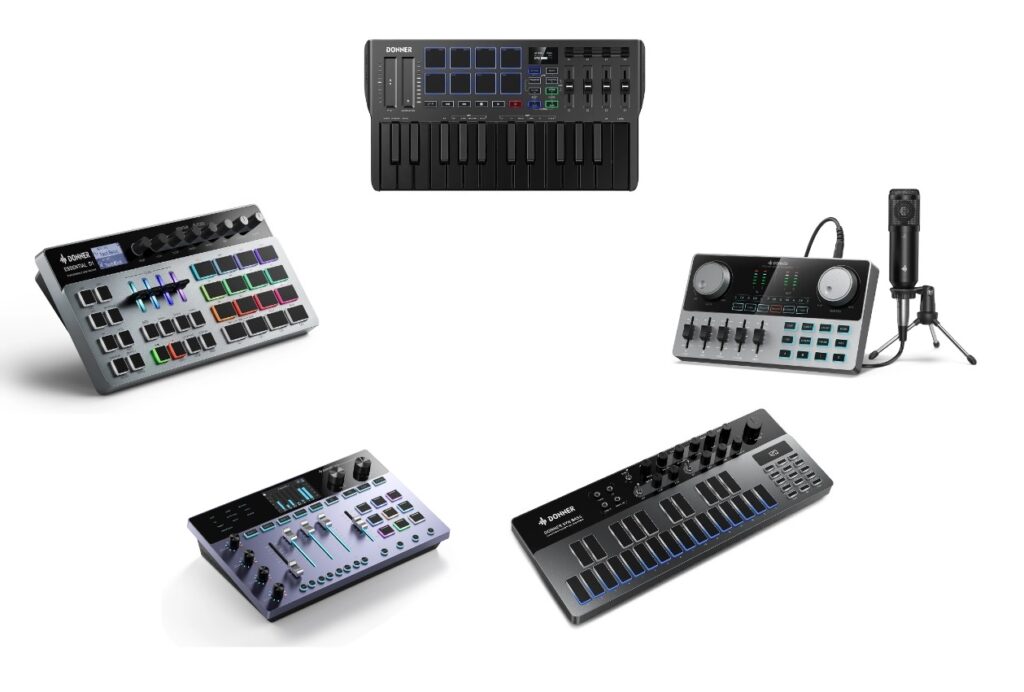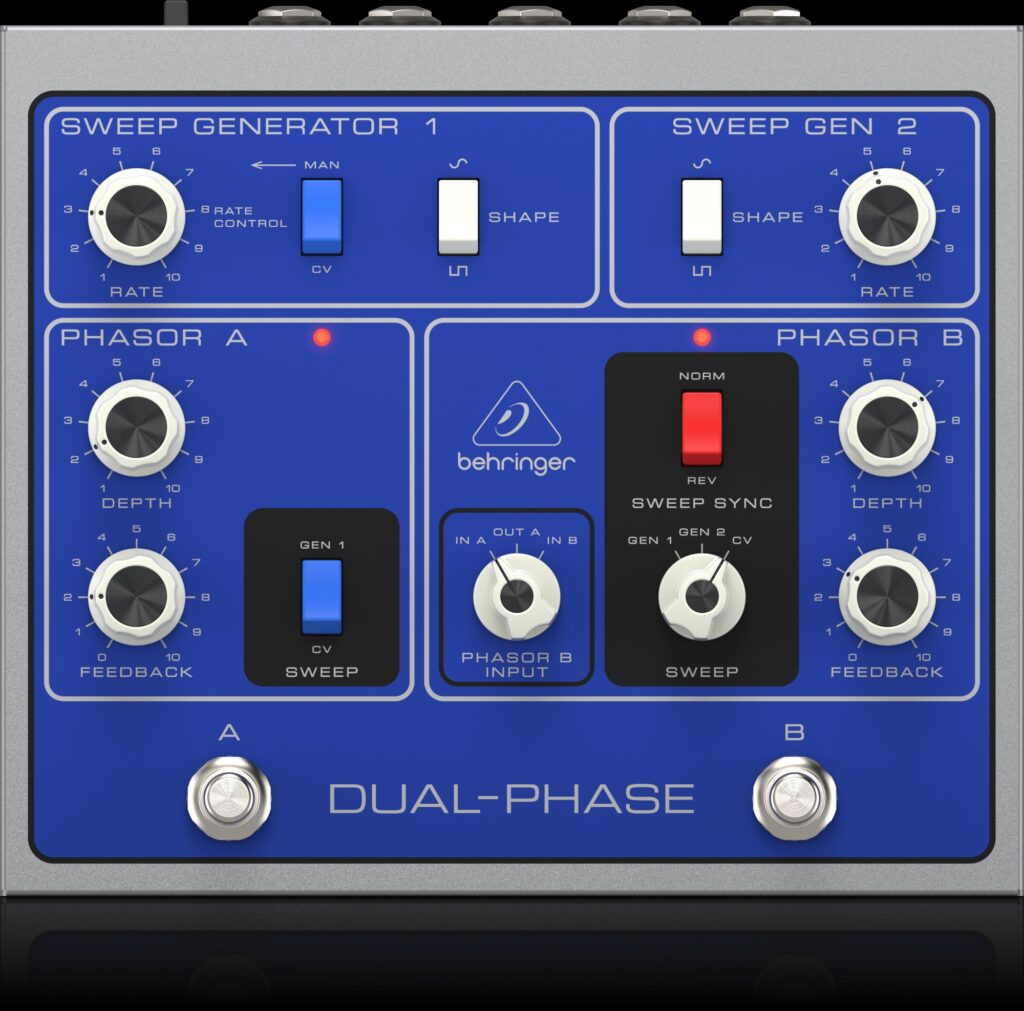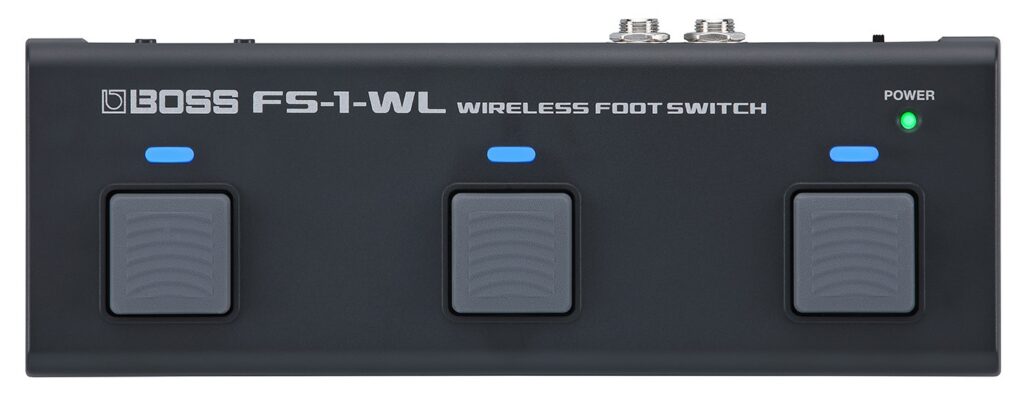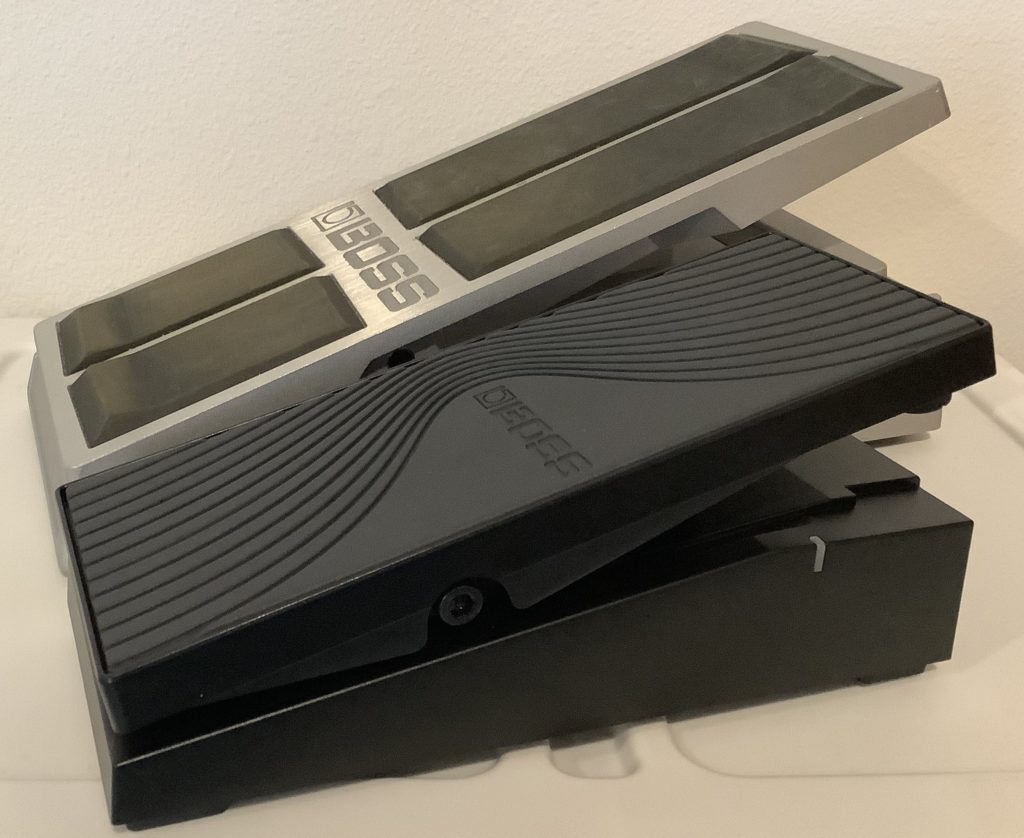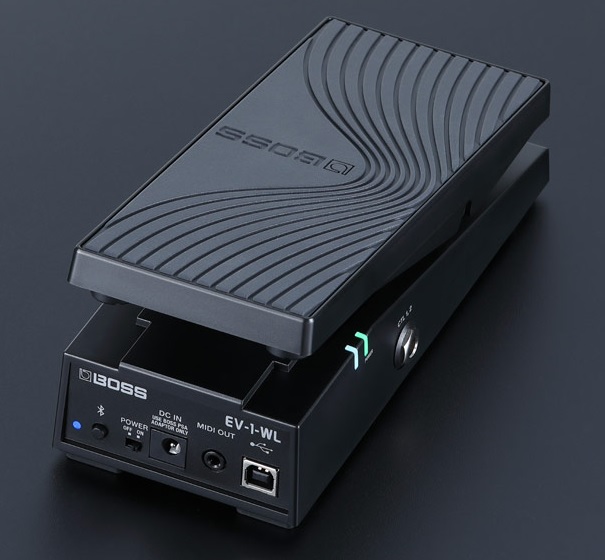Roland Gigcaster
Turn your back for one second after NAMM 2023 and Roland slip out the Boss Gigcaster 5 and Gigcaster 8. These are audio streaming mixers aimed at the podcasting community.
Astutely, Roland recognize that these mixer have application beyond podcasting. They are, after all, mixers! Gigcasters have all the features one might want in a small format studio mixer. Thus, Roland show musicians happily strumming, singing and playing keys in their bedroom studios. They are rather attractively and colorfully styled.
The Gigmaster 5 sells for $480 USD and the Gigmaster 8 costs $700.
There’s gold in those podcasting hills and small format podcasting mixers (desktop production boxes) are busting out all over. Yamaha, for example, introduced the AG08 USB streaming mixer ($630) at NAMM 2023. The AG08 joins the lower-priced AG03 mk2 and AG06 mk2 models.
Indiegogo: InstaChord
InstaChord is a MIDI guitar Indiegogo project. They are trying to get enough backers to go into production with expected delivery in April 2024. Early bird bundles go for $374 USD.
The InstaChord looks like a Klingon Bird of Prey. 🙂 There are six strummable “buttons” instead of strings, and a 2-D button matrix instead of a fretboard. Buttons in the matrix select chords using a numeric method similar to I, ii, iii, IV, V, vi, dim vii notation within a scale.
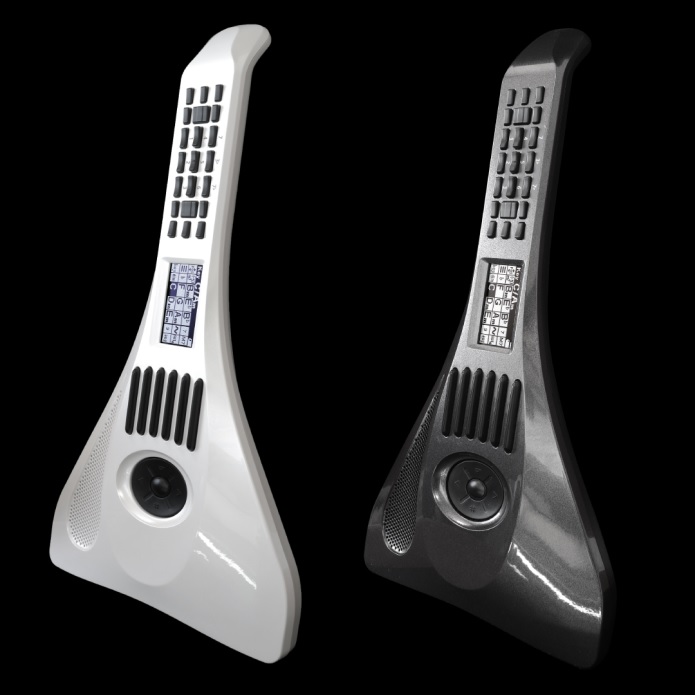
InstaChord produces sound through its own internal speaker. The internal tone generator is a Dream SAM2695 (GM sound set). The SAM2695 is the same chip inside of the Akai MPK Mini Play. InstaChord sends and receives MIDI via USB Type C or Bluetooth.
UJEII — AKA “My Main Man” — shows off an early prototype in this Insta Chord Demo (Katsunori UJIIE). UJIIE shows that he can rock out strumming, not just shredding keys!
The InstaChord reminds me of the old You Rock Guitar (still sitting in my closet). Unlike the YRG, InstaChord does not try to mimic guitar strings or fretboard. YRG requires standard fretboard fingering, which is a barrier for many casual players (like me). I simply don’t have the time to practice guitar skills on top of keys. InstaChord requires a modicum of music theory; any good keys player should be able to adapt.
Check out the free InstaChord-i IOS app, if you want a taste.
Not to pick on the InstaChord folks in particular, but, hey! If you have a new product, at least Google the product name before committing to the name. Searching on “InstaChord” took me to the W.A. Productions plug-in by the same name. Come on!
BlackBT SusEx Pedal
BlackBT® announced the SusEx® pedal which combines MIDI foot switch and continuous control (expression) functionality. SusEx is available for pre-order costing $150 USD. It is expected to ship in June 2023.
I contend that the SusEx is not “the first” to combine footswitch and expression control in one pedal. The “first” title goes, instead, to the Boss/Roland EV-1-WL. I’ve been using the EV-1-WL for well over a year now… Like the Boss EV, SusEx communicates over Bluetooth BLE and USB. No 5-pin capability, tho’
None the less, the SusEx has a cool way of switching between sustain mode and expression mode. It senses foot position and automatically switches mode. With the EV-1-WL, one either adds an external footswitch for sustain, or presses down hard with the toes at the top of the pedal. Check out the SusEx demo video
The SusEx pedal is absolutely tiny and should be lightweight and easy to transport. Dunno about you, but I’m tired of toting around heavy, built like a tank expression pedals. Some folks may not like the pedal throw, but that is personal preference.
Donner
Donner established a reputation for bargain-priced guitar toys. Now they are coming for keys. Donner have a line of portable piano and arranger instruments. Products include the Donner Essential B1 Analog Bass Synthesizer, the DMK-25 PRO MIDI controller, and the D1 Drum Machine and Sequencer. Of course, they also have — TA-DA — podcasting gear, too.
The Donner direct sales outlet is currently running a sale on select products including the B1. These guys want market share!
Donner are going to give low-cost specialists Casio and Akai conniptions. I don’t have any direct experience with Donner products, but do suggest getting native English tech writers to produce and edit their marketing literature and manuals. Slipshod writing gives people a bad impression of product quality and many people are unsure about Donner as a brand.
Just a quick Yamaha CK observation. The CKs are clearly aimed at the Roland VR-09, which sells at the same $1,000 price points. The CK beats the VR for non-organ sounds. Fight’s on!
Copyright © 2023 Paul J. Drongowski

